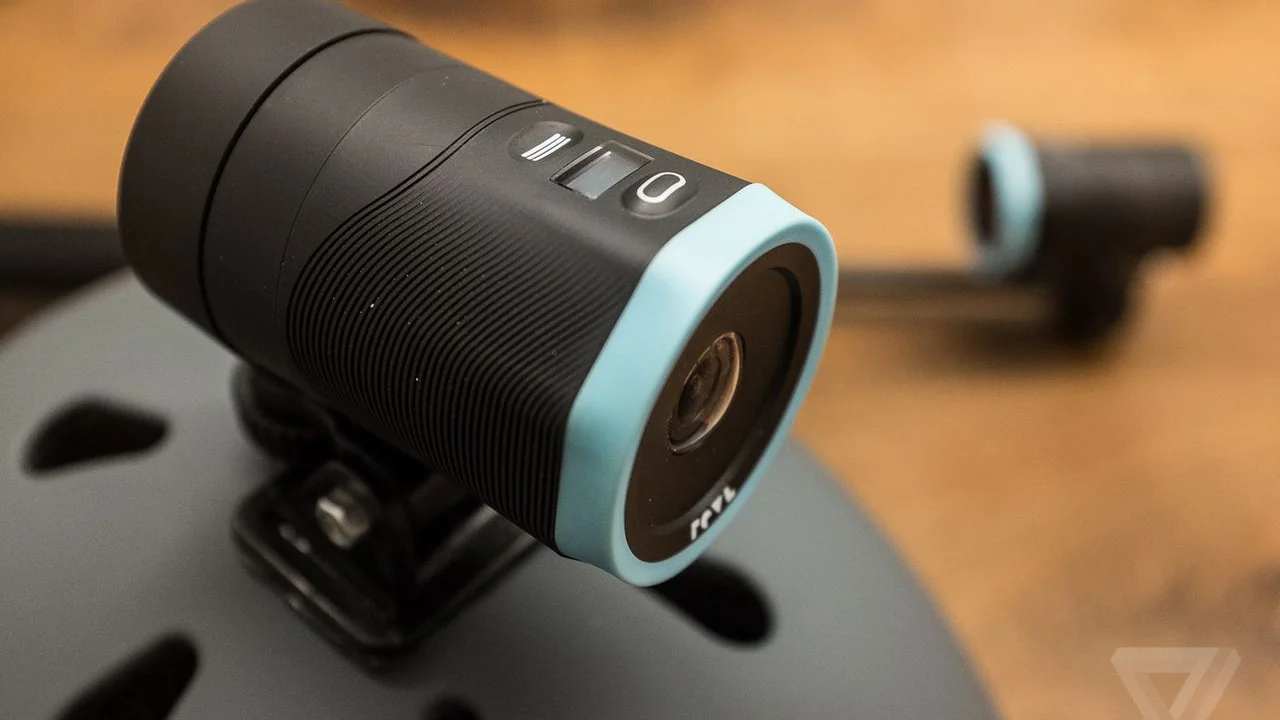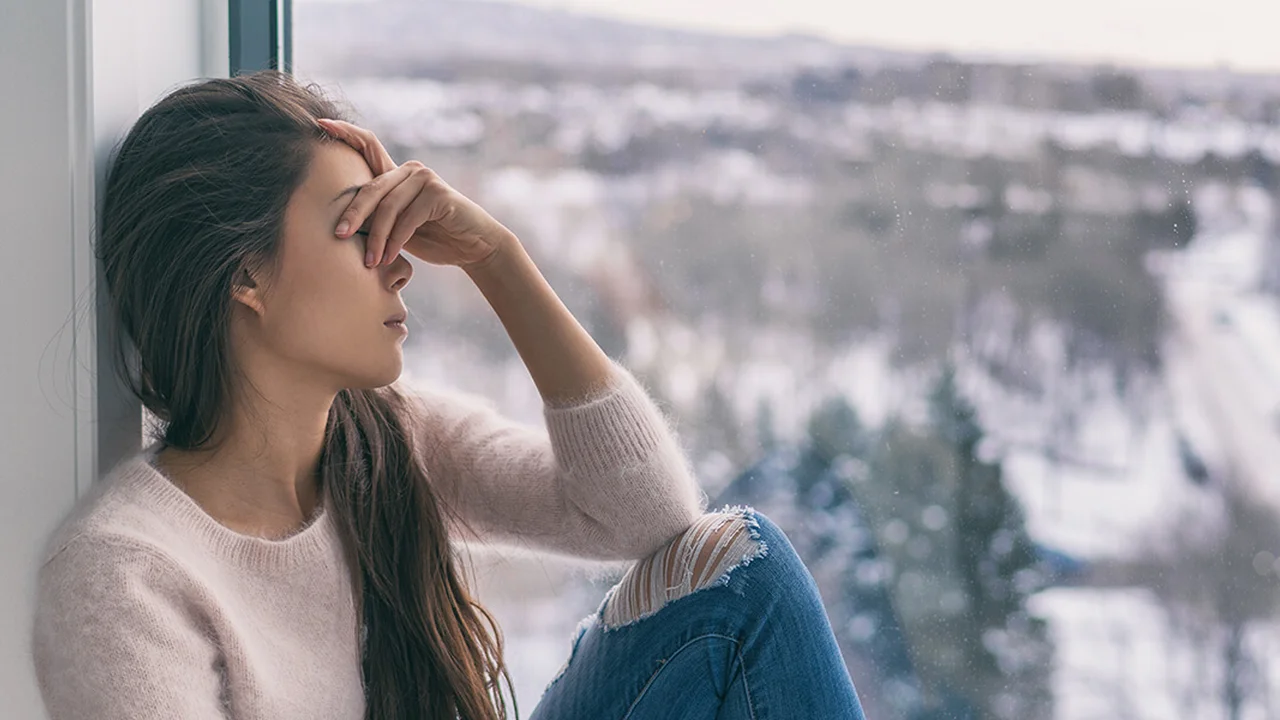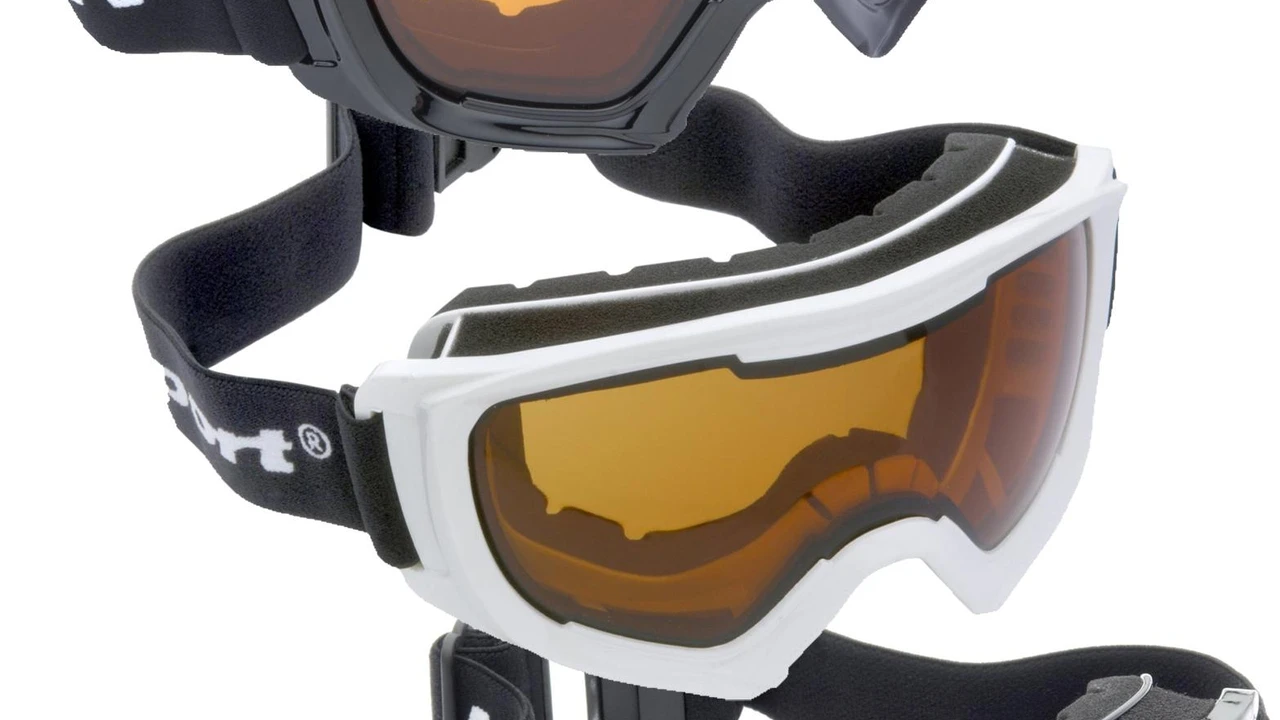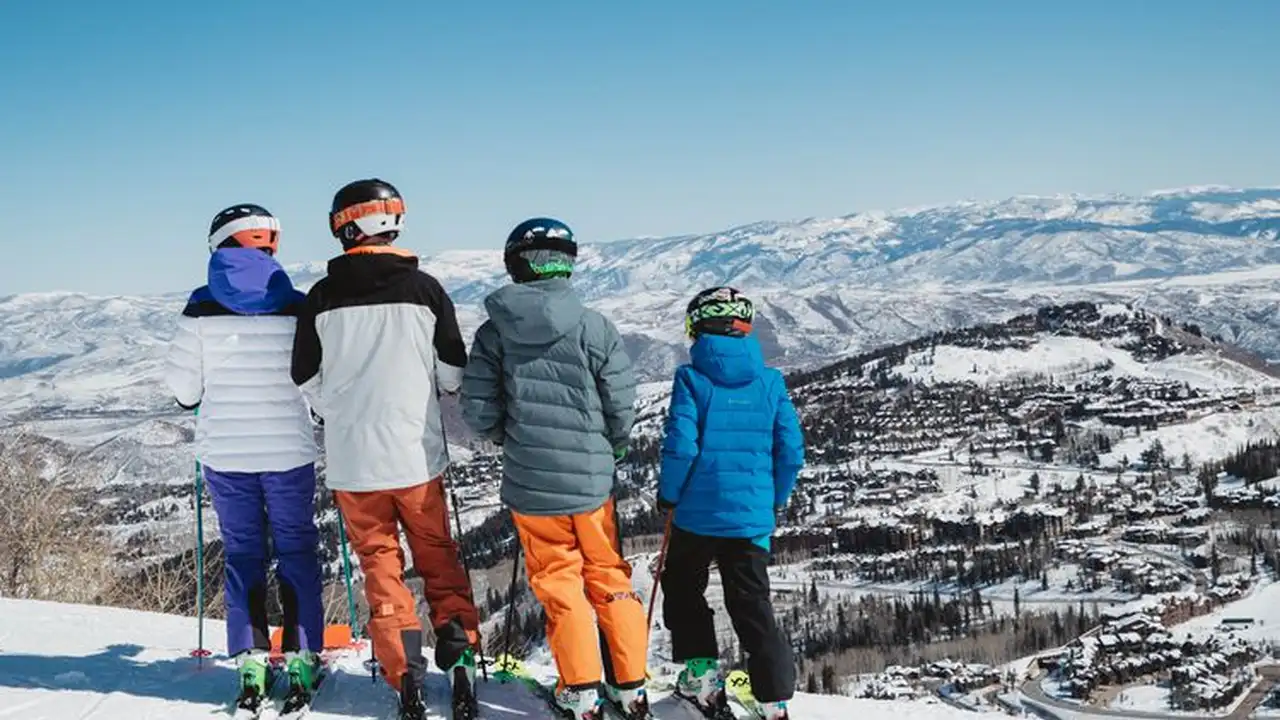
Action Cameras for Winter Footage
Why You Need an Action Camera for Your Winter Adventures
Winter sports are all about adrenaline, breathtaking landscapes, and unforgettable moments. Whether you're carving down a powdery slope, navigating a challenging ice climb, or simply enjoying a serene snowshoe hike, you'll want to relive those experiences and share them with others. That's where action cameras come in. Unlike your smartphone or a traditional DSLR, action cameras are built to withstand the harsh conditions of winter – the cold, the snow, the impacts, and even submersion in icy water. They're compact, incredibly versatile, and designed for hands-free operation, allowing you to focus on your activity while capturing stunning footage.
The evolution of action camera technology has been rapid. We've moved from grainy, shaky footage to crisp 4K and even 5K video, advanced image stabilization that makes your footage look buttery smooth, and smart features like voice control and GPS overlays. For winter sports enthusiasts, these advancements mean you can capture professional-looking content without needing a dedicated film crew. Imagine showing off your perfect run with a first-person perspective, or a time-lapse of a snow-covered mountain sunrise. An action camera makes it all possible.
Key Features to Look for in Winter Action Cameras
When choosing an action camera specifically for winter use, there are several critical features you should prioritize. These go beyond just resolution and frame rate, focusing on durability, usability in cold environments, and specialized winter-friendly functions.
Durability and Waterproofing for Snow and Ice
This is non-negotiable. Your camera will be exposed to snow, ice, and potentially water. Look for cameras that are waterproof without needing an external housing, typically rated to at least 10 meters (33 feet). This ensures protection from splashes, snow, and even accidental dips. The build quality should also be robust, capable of handling drops and impacts that are common in dynamic sports environments. Cold temperatures can make plastics brittle, so a well-engineered, durable casing is essential.
Image Stabilization for Smooth Winter Sports Footage
Whether you're skiing, snowboarding, or snowmobiling, your movements will be dynamic and often jerky. Electronic Image Stabilization (EIS) or, even better, Hypersmooth/RockSteady-like digital stabilization, is crucial. This technology digitally smooths out bumps and shakes, making your footage look professional and watchable. Without it, your viewers might get motion sickness! Look for the latest generation of stabilization for the best results.
Battery Life in Cold Temperatures
Cold weather is notorious for draining battery life quickly. A camera that boasts excellent battery life in normal conditions might struggle in sub-zero temperatures. Look for models with improved cold-weather battery performance or consider purchasing extra batteries. Some cameras offer specialized 'Enduro' or 'Cold Weather' batteries designed to perform better in low temperatures. Always carry spare batteries and keep them warm, perhaps in an inside pocket, until needed.
Ease of Use with Gloves On
Fiddling with tiny buttons or a touchscreen with frozen fingers or thick gloves is a nightmare. Look for cameras with large, tactile buttons that are easy to press even with gloves. Voice control is an excellent feature for hands-free operation, allowing you to start/stop recording or change modes without removing your gloves. A responsive touchscreen that works with gloves (or has a glove mode) is also a plus, but physical buttons are often more reliable in extreme cold.
Mounting Options for Skiing Snowboarding and More
Versatile mounting options are key to capturing diverse perspectives. You'll want mounts for helmets, chests, poles, and even your skis or snowboard. Ensure the camera has a wide range of compatible mounts, both first-party and third-party, that are secure and easy to attach/detach even in cold conditions. Quick-release mechanisms are particularly useful.
Video Resolution and Frame Rates for High-Quality Winter Videos
While 4K resolution is standard now, consider higher frame rates (like 60fps or 120fps) at 4K for smoother slow-motion playback. 2.7K or 1080p at even higher frame rates (240fps) can be great for super slow-motion action shots. Higher resolution gives you more flexibility in post-production for cropping and zooming without losing detail. However, remember that higher resolutions and frame rates consume more battery and storage.
Top Action Camera Recommendations for Winter Sports Enthusiasts
Let's dive into some of the best action cameras on the market that are perfectly suited for your winter adventures. We'll look at their strengths, ideal use cases, and approximate pricing.
GoPro Hero 12 Black The All-Rounder for Snow Sports
Overview: The GoPro Hero 12 Black is arguably the king of action cameras, and for good reason. It offers incredible image quality, industry-leading HyperSmooth 6.0 stabilization, and a robust, waterproof design. It shoots up to 5.3K video at 60fps and 4K at 120fps, providing stunning detail and excellent slow-motion capabilities. The new Enduro battery significantly improves cold-weather performance, making it a top choice for winter sports.
Key Features for Winter:
- HyperSmooth 6.0: Unmatched stabilization for buttery-smooth footage, even on the bumpiest runs.
- Enduro Battery: Specifically designed for improved performance in cold temperatures, extending recording times.
- Waterproof to 10m (33ft): No need for an extra housing for snow and splashes.
- Voice Control: Operate the camera hands-free, perfect when wearing gloves.
- Versatile Mounting: Extensive ecosystem of mounts for every angle imaginable.
- HDR Video: Captures more detail in highlights and shadows, crucial for bright snow scenes.
Ideal Use Case: Skiing, snowboarding, snowmobiling, ice climbing, and any high-action winter sport where top-tier video quality and stabilization are paramount. It's a fantastic all-rounder for serious enthusiasts.
Approximate Price: $399 - $449 USD
Comparison: Compared to older GoPros, the Hero 12's battery life and HyperSmooth are significant upgrades. It offers a more refined user experience than some competitors, with a vast accessory ecosystem.
DJI Osmo Action 4 The Cold-Weather Champion
Overview: The DJI Osmo Action 4 has quickly become a favorite for winter sports due to its exceptional cold-weather battery performance and impressive image quality. It features a larger sensor than its predecessor, leading to better low-light performance and dynamic range. Its magnetic quick-release mounting system is incredibly convenient, especially with cold hands.
Key Features for Winter:
- Native Cold Resistance: Designed to operate in temperatures as low as -20°C (-4°F) for extended periods, making it a true cold-weather champion.
- RockSteady 3.0+ Stabilization: Delivers incredibly stable footage, rivaling GoPro's HyperSmooth.
- Magnetic Quick-Release Mount: Super fast and secure attachment/detachment, a huge plus when wearing gloves.
- Waterproof to 18m (59ft): Deeper native waterproofing than GoPro.
- Dual Touchscreens: Front and rear touchscreens make framing and control easy.
Ideal Use Case: Perfect for those who frequently venture into extremely cold environments or prioritize maximum battery life in freezing conditions. Excellent for backcountry skiing, ice fishing, or multi-day winter expeditions.
Approximate Price: $299 - $399 USD
Comparison: The Osmo Action 4's standout feature is its cold-weather battery performance, often outperforming GoPro in sub-zero conditions. Its magnetic mount is also a significant convenience factor. Image quality is very close to GoPro, with some preferring DJI's color science.
Insta360 X3 The Immersive 360-Degree Winter Experience
Overview: The Insta360 X3 isn't a traditional action camera; it's a 360-degree camera that captures everything around you. This allows for incredible reframing in post-production, letting you choose your angle after the fact. It's waterproof and surprisingly durable, making it a unique option for winter sports, especially with its 'invisible selfie stick' feature.
Key Features for Winter:
- 360-Degree Capture: Never miss a shot; capture everything and reframe later.
- Invisible Selfie Stick: Makes the selfie stick disappear from your footage, creating drone-like shots.
- FlowState Stabilization: Excellent stabilization for smooth 360 footage.
- Waterproof to 10m (33ft): Good for snow and splashes.
- Large Touchscreen: Easy to navigate settings.
Ideal Use Case: Snowboarding, skiing (especially for unique third-person perspectives), capturing entire scenes, or for content creators who want maximum flexibility in post-production. Great for showcasing the vastness of winter landscapes.
Approximate Price: $449 - $499 USD
Comparison: The X3 offers a fundamentally different capture experience. While it doesn't have the raw resolution of a traditional action camera for a single perspective, its 360 capabilities open up creative possibilities that no other camera can match. The editing workflow is different and requires more time, but the results can be spectacular.
GoPro Hero 11 Black Mini The Compact Powerhouse for Winter
Overview: The Hero 11 Black Mini packs the same powerful sensor and HyperSmooth 5.0 stabilization as the full-sized Hero 11 Black but in a smaller, lighter, and simpler package. It lacks a screen, relying on a smartphone app for control, but its dual mounting fingers make it incredibly versatile for attaching to helmets or boards.
Key Features for Winter:
- Compact Size: Less obtrusive on helmets or gear.
- Dual Mounting Fingers: More flexible mounting options.
- HyperSmooth 5.0: Top-tier stabilization.
- Waterproof to 10m (33ft): Standard GoPro waterproofing.
- Simplified Controls: One-button operation for quick capture.
Ideal Use Case: Minimalists who want high-quality footage without the bulk, or as a secondary camera for unique angles. Excellent for helmet mounting where a larger camera might feel cumbersome.
Approximate Price: $299 - $349 USD
Comparison: It's essentially a screen-less Hero 11 Black. If you don't need a screen on the camera itself and prefer a smaller footprint, the Mini is a great value. It shares the same excellent image quality and stabilization as its larger sibling.
Essential Accessories for Winter Action Camera Use
Having the right accessories can significantly enhance your winter action camera experience. Don't skimp on these!
Spare Batteries and Portable Chargers for Cold Weather
As mentioned, cold drains batteries. Always carry at least two spare batteries, and keep them in a warm pocket (like an inner jacket pocket) until you're ready to swap them in. A small, rugged portable power bank can also be a lifesaver for recharging batteries on the go, especially if you're out for a full day or multi-day trip.
Mounts for Helmets Chests and Ski Poles
Helmet Mounts: Provide a great first-person perspective. Ensure it's secure and doesn't obstruct your vision or safety. Adhesive mounts are common, but strap mounts can be more versatile for different helmets.
Chest Mounts: Offer a lower, more stable perspective, showing your hands and skis/board. Often preferred for a sense of speed and immersion.
Ski Pole/Handlebar Mounts: Great for capturing follow-cam shots or self-portraits. Ensure they are robust and can withstand vibrations.
Adhesive Mounts: For attaching directly to skis, snowboards, or other flat surfaces. Make sure the surface is clean and dry before applying, and allow time for the adhesive to cure, especially in cold weather.
Anti-Fog Inserts and Lens Protectors for Clear Winter Footage
Condensation and fogging are common issues when moving between warm and cold environments. Anti-fog inserts (small silica gel packets) placed inside the camera housing (if used) or directly on the lens can prevent this. Lens protectors are crucial to prevent scratches from ice, snow, or accidental impacts. Some cameras have replaceable lens covers, which is a huge plus.
Protective Cases and Bags for Transporting Your Camera
When not in use, your action camera needs protection. A padded, water-resistant case will shield it from impacts, moisture, and extreme cold during transport. Look for cases with custom cutouts for the camera and essential accessories to keep everything organized and secure.
Remote Control or Voice Control for Hands-Free Operation
Operating your camera with frozen fingers or thick gloves is a pain. A dedicated remote control (often wrist-worn) or reliable voice control allows you to start/stop recording, take photos, or change modes without fumbling with the camera itself. This is a huge convenience for maintaining flow during your activity.
Tips for Capturing Amazing Winter Action Camera Footage
Beyond the gear, knowing how to use it effectively in winter conditions will elevate your footage from good to great.
Optimizing Camera Settings for Bright Snow Conditions
Snow is incredibly reflective, which can trick your camera's auto-exposure. Here are some tips:
- Exposure Compensation: Often, you'll need to overexpose slightly (+0.5 or +1.0 EV) to prevent the snow from looking grey.
- White Balance: Auto white balance usually works well, but if your snow looks too blue or yellow, try a manual setting like 'Cloudy' or a specific Kelvin temperature.
- Protune/Pro Mode: If your camera has it, use it! This gives you more control over ISO, shutter speed, and color profile, allowing for better post-production grading.
- Frame Rate: Use higher frame rates (60fps, 120fps) for smooth slow-motion, especially for fast-moving action.
Maintaining Battery Life in Freezing Temperatures
- Keep Batteries Warm: Store spare batteries in an inside pocket close to your body heat.
- Turn Off When Not Recording: Don't leave the camera on standby for long periods. Turn it off between shots.
- Minimize Screen Use: If your camera has a screen, reduce its brightness or turn it off when not actively framing.
- Use Cold-Optimized Batteries: If available for your camera model, invest in them.
Cleaning Lenses and Preventing Fogging in Snow
Always carry a microfiber cloth to wipe snow or water droplets from the lens. Avoid breathing directly on the lens, as your warm breath will instantly fog it up in cold air. If fogging occurs, try to equalize the temperature slowly, or use anti-fog inserts. Never wipe a frozen lens with force, as you could scratch it.
Creative Angles and Perspectives for Dynamic Winter Shots
- Helmet Mount: Classic POV, great for showing what you see.
- Chest Mount: Shows more of your body and gear, giving a sense of scale and speed.
- Pole Mount (Selfie Stick): For third-person shots, follow-cam, or showing off the scenery behind you.
- Ski/Snowboard Mount: Unique low-angle shots of the snow flying past.
- Mouth Mount: For a truly immersive, hands-free POV.
- Drone Shots (if applicable): For breathtaking aerial views of the landscape and your activity (be mindful of regulations and cold weather drone performance).
Post-Production Tips for Enhancing Winter Footage
Even the best raw footage can be improved in editing:
- Color Grading: Adjust white balance, contrast, and saturation to make the snow pop and colors vibrant. Avoid over-saturating.
- Stabilization (if needed): Even with in-camera stabilization, minor tweaks in post-production software can make a difference.
- Speed Ramps: Use slow-motion for key action moments and speed up less interesting parts.
- Music: Choose an upbeat or atmospheric soundtrack to match the mood of your adventure.
- Transitions: Use smooth transitions between clips.
- Export Settings: Export in a high-quality format suitable for sharing on your chosen platform (YouTube, Instagram, etc.).
Future Trends in Action Camera Technology for Winter Sports
The action camera market is constantly evolving, and several trends are likely to impact winter sports enthusiasts:
Improved Low-Light Performance for Early Morning or Late Afternoon Skiing
As sensor technology advances, we can expect even better low-light performance, allowing for clearer footage during dawn patrols or sunset runs when light is scarce but the scenery is magical.
Enhanced AI Features for Smart Capture and Editing
AI is already being used for smart capture modes (like GoPro's HindSight) and automatic highlight reel generation. Future cameras might offer more advanced AI for subject tracking, automatic best-shot selection, or even in-camera editing suggestions, making the process even easier.
Longer Lasting Batteries and More Efficient Power Management
Battery technology is always improving. We'll likely see even longer-lasting batteries that perform better in extreme cold, along with more efficient processors that consume less power, extending recording times significantly.
Modular Designs and Specialized Lenses for Different Conditions
Some cameras are already moving towards modular designs (like the DJI Action 2). This could lead to more specialized modules for winter, such as dedicated cold-weather batteries, interchangeable lenses optimized for snow glare, or even integrated heating elements for the lens.
Integration with Wearable Tech and GPS Data Overlays
Seamless integration with smartwatches and other wearables could allow for more comprehensive data overlays on your footage – showing speed, altitude, heart rate, and GPS tracks directly on your video, adding a professional and informative touch.
Choosing the right action camera for your winter adventures is about balancing features, budget, and your specific needs. Whether you opt for the versatile GoPro, the cold-weather champion DJI Osmo Action, or the immersive Insta360, investing in a quality action camera will allow you to capture and share the thrilling beauty of your winter experiences for years to come. So, gear up, hit the slopes, and start filming those epic moments!
:max_bytes(150000):strip_icc()/277019-baked-pork-chops-with-cream-of-mushroom-soup-DDMFS-beauty-4x3-BG-7505-5762b731cf30447d9cbbbbbf387beafa.jpg)






